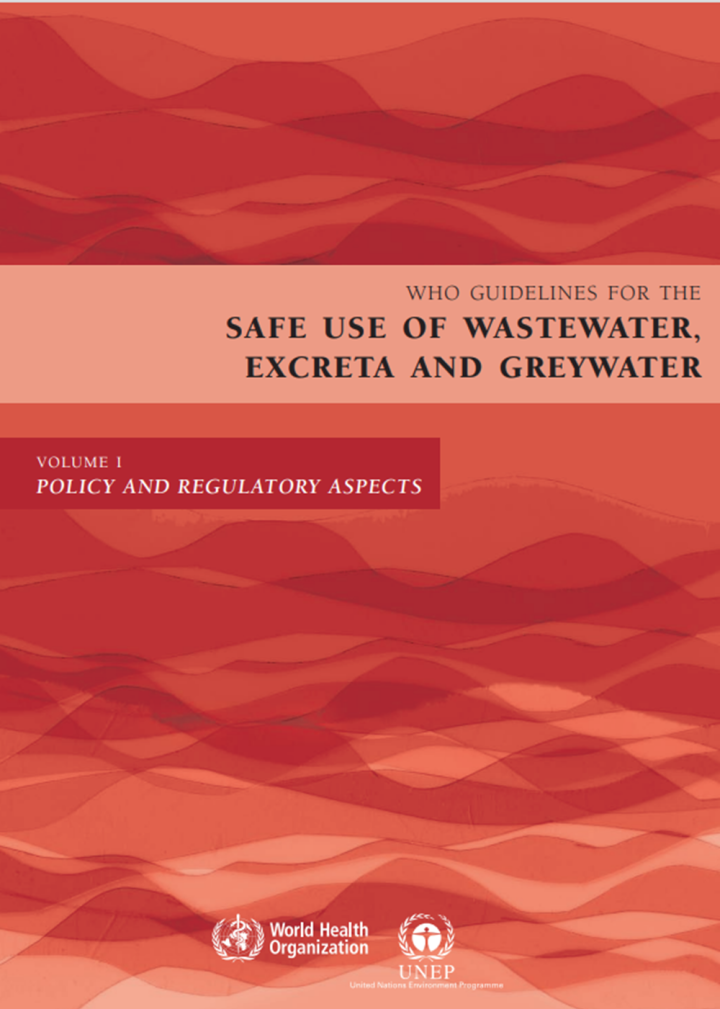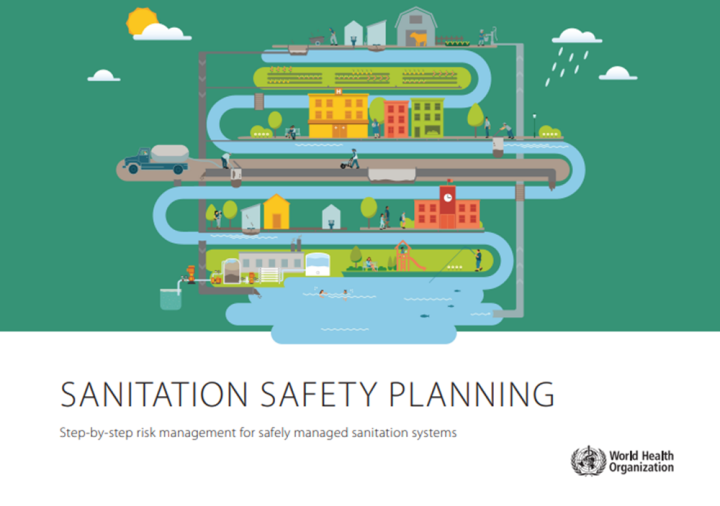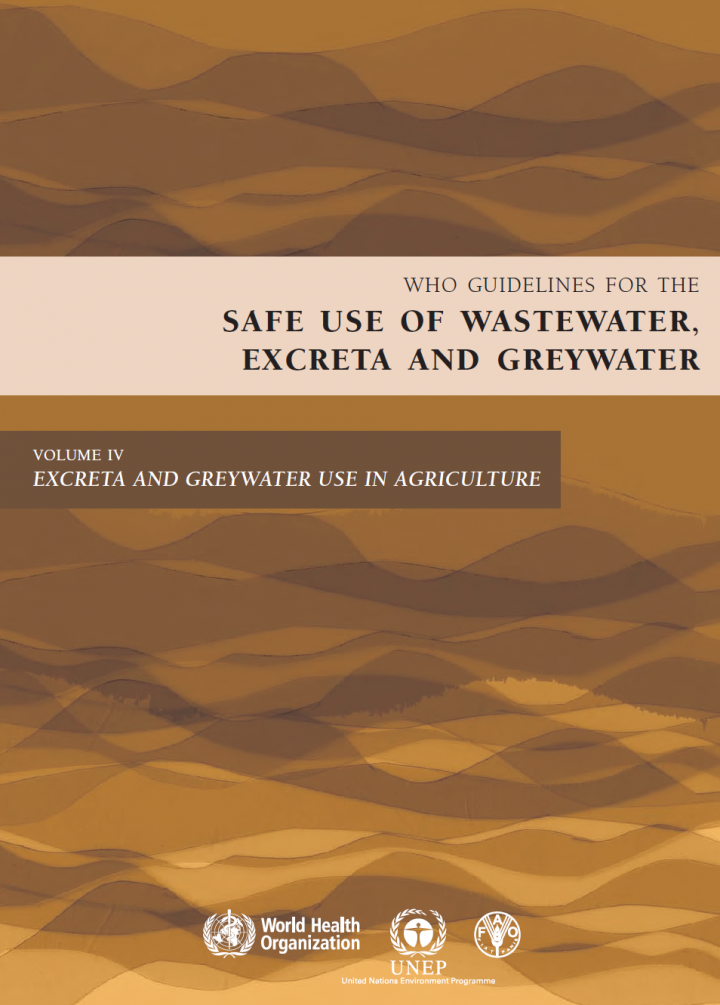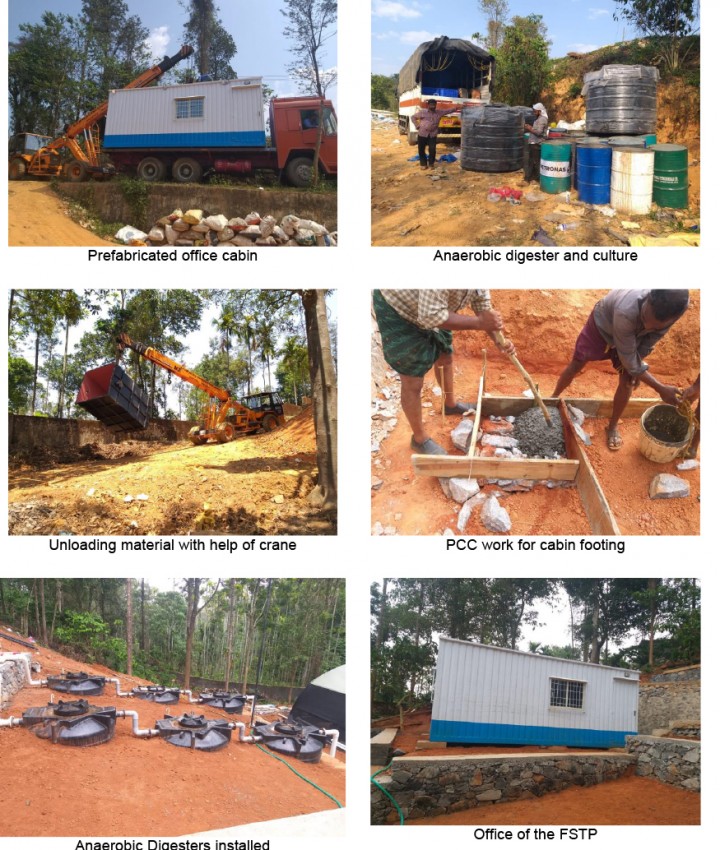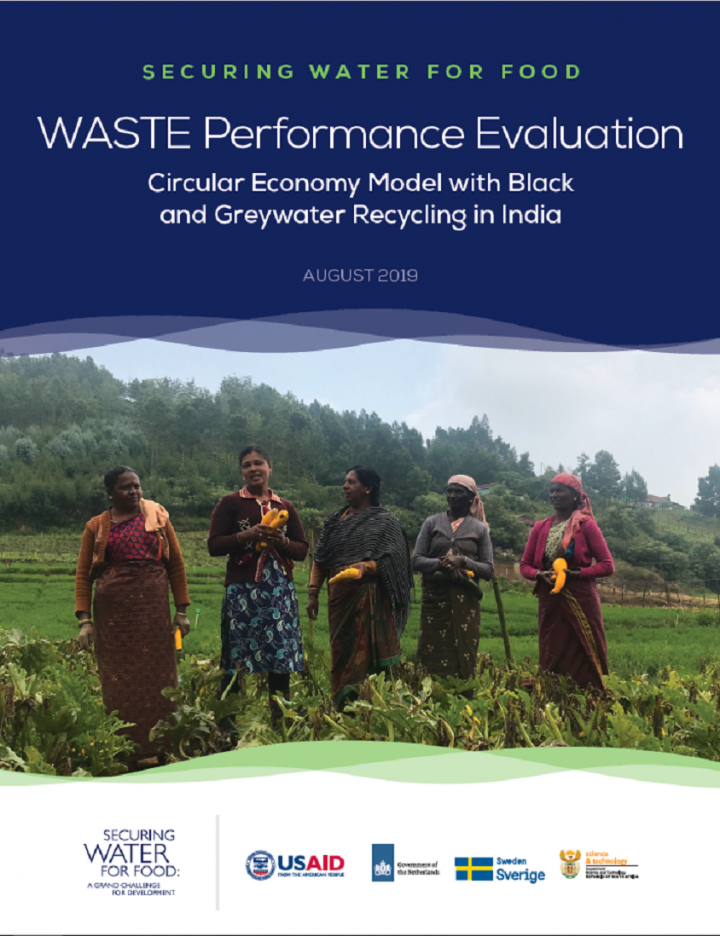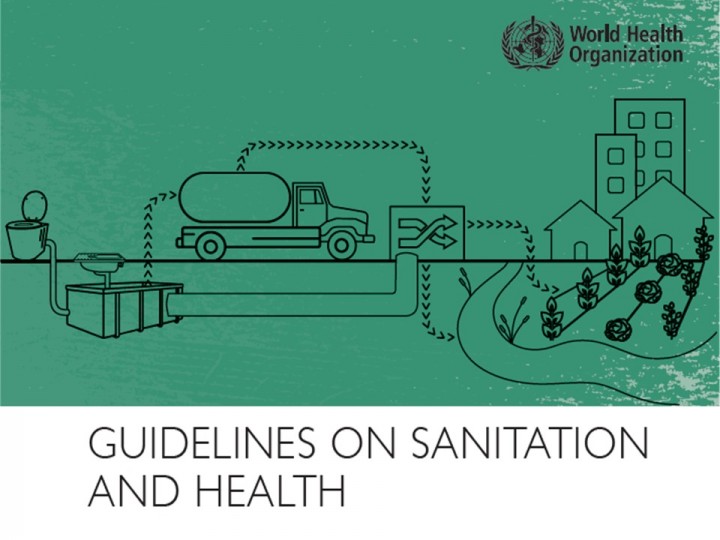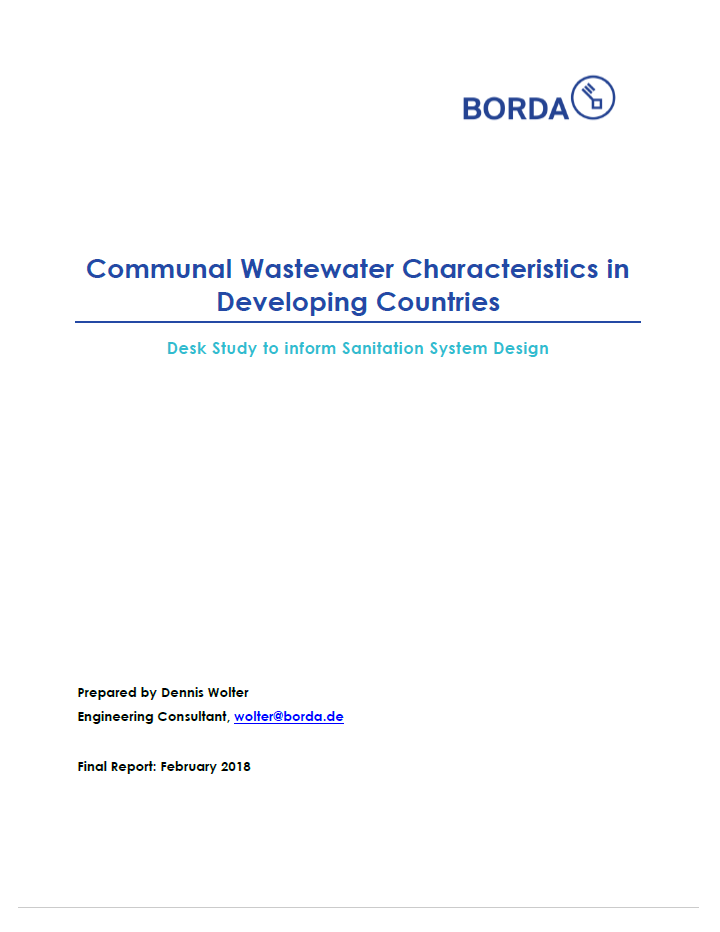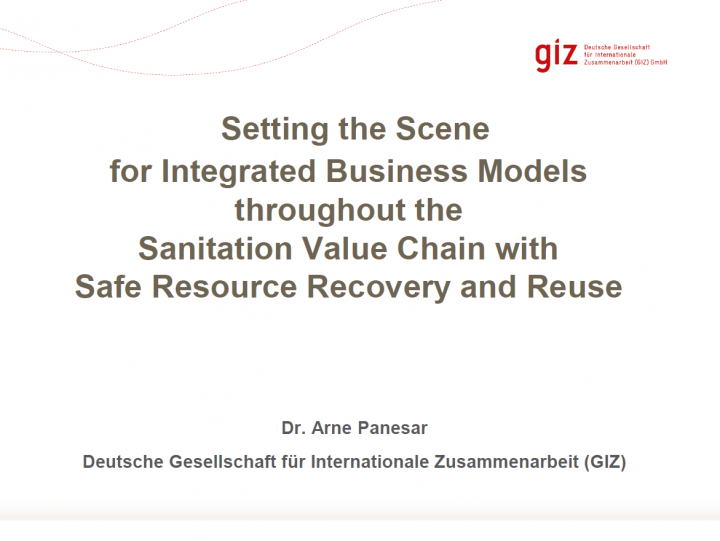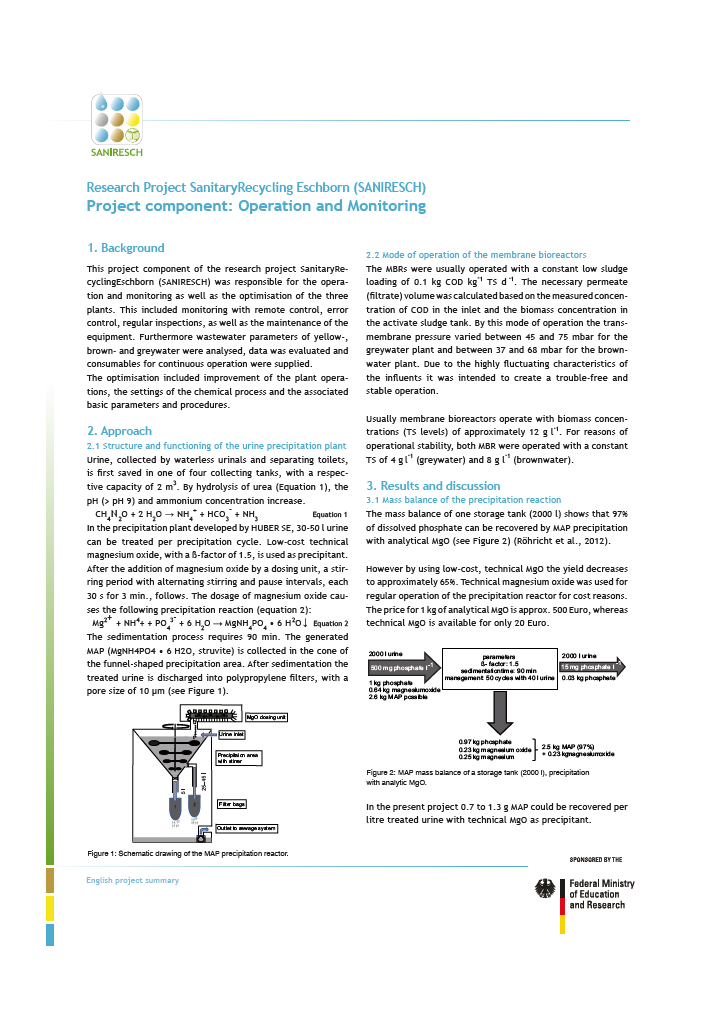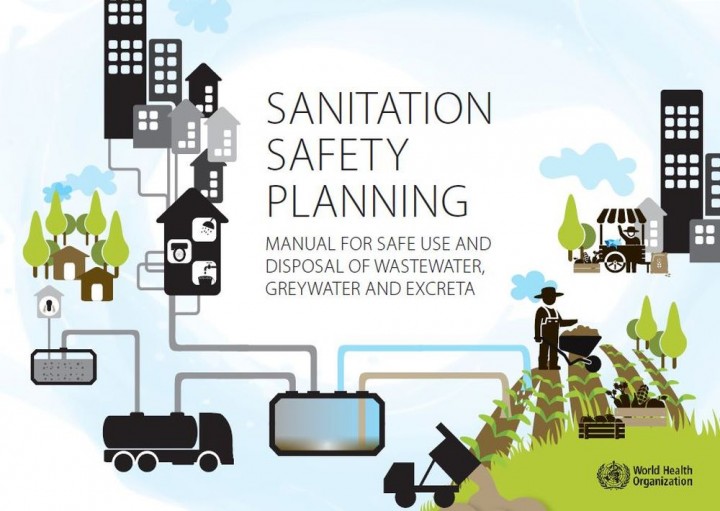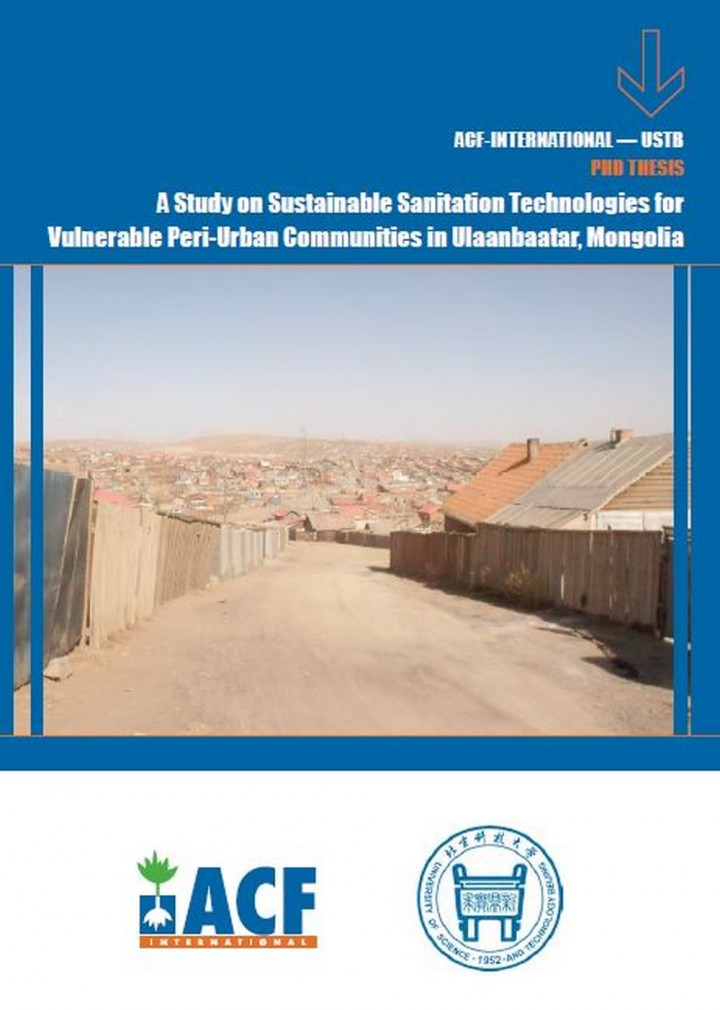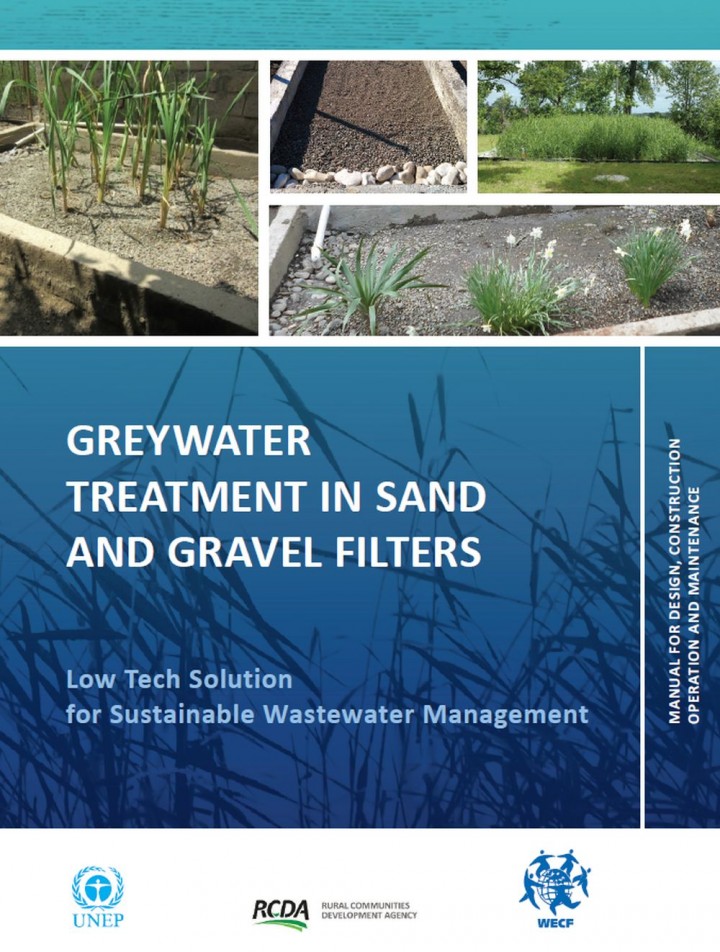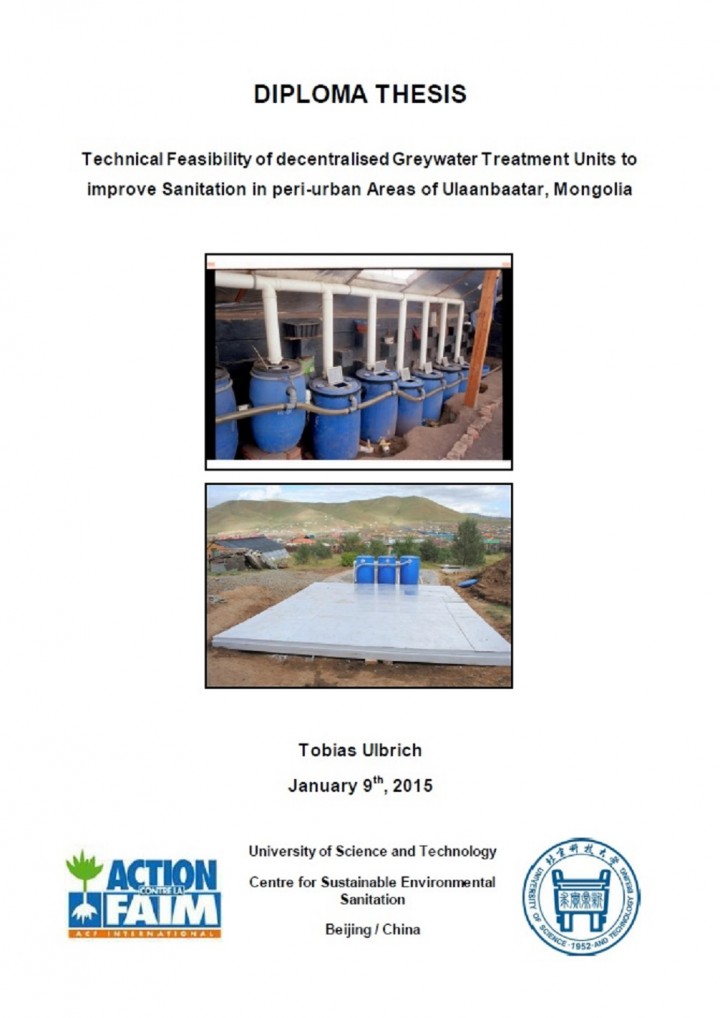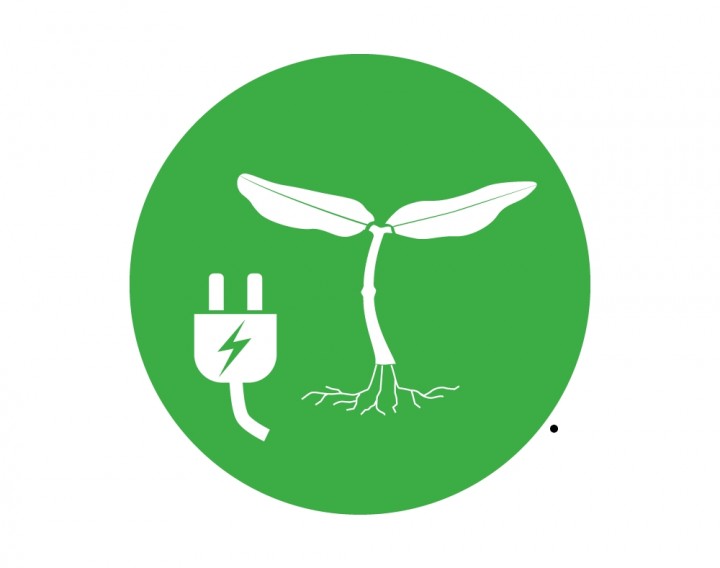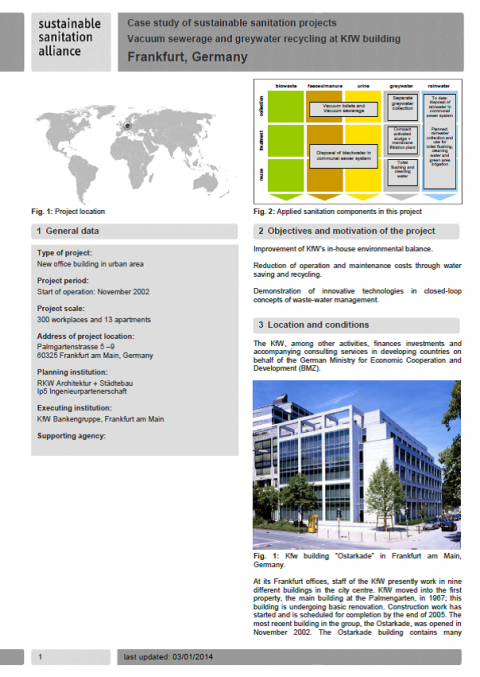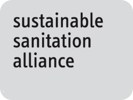World Health Organization (2013) Guidelines for the safe use of wastewater, excreta and greywater - Volume 1
Volume 1 of the Guidelines presents policy issues and regulatory measures distilled from the technical detail found in volumes 2, 3 and 4. Those faced with the need to expedite the development of policies, procedures and regulatory frameworks, at national and local government levels, will find the essential information in this volume. It also includes summaries of the other volumes in the series.
World Health Organization (2022) Sanitation safety planning - Second edition
This Sanitation safety planning (SSP) manual provides practical, step-by-step guidance to assist in the implementation of the 2018 World Health Organization (WHO) Guidelines on sanitation and health and the 2006 WHO Guidelines for safe use of wastewater, excreta and greywater in agriculture and aquaculture. The approach and tools should be applied to all sanitary systems to ensure that they are managed to meet health objectives. The […]
WHO (2006) Guidelines for the safe use of wastewater, excreta and greywater - Volume 4 Excreta and greywater use in agriculture
Volume 4 of the Guidelines for the safe use of wastewater, excreta and greywater provides information on the assessment and management of risks associated with microbial hazards. It explains requirements to promote the safe use of excreta and greywater in agriculture, including minimum procedures and specific health-based targets, and how those requirements are intended to be used. This volume also describes the approaches used in […]
UNICEF (2019) Report on Wayanad FSTP
Wayanad's pilot project on faecal sludge management (FSM) has encouraged risk-informed programming, innovation, in the sanitation sector. A unique waste management system has been commissioned in Wayanad that uses vermifiltration (use of worms) to process waste and turn it into compost and useable greywater.
WASTE (2019) WASTE Performance Evaluation - Circular Economy Model with Black and Greywater Recycling in India
This report details the monitoring and evaluation of the recent innovation by WASTE among the small-scale farmers of the horticulture district of Nilgiris in the state of Karnataka in July 2019. Fifty independent farmers were selected for interviews through a random sampling with a mix of male and female headed households. Criteria was established to assess household income, crop yield, water practices, expenses, and perceptions […]
WHO (2018) Guidelines on Sanitation and Health
Safe sanitation is essential for health, from preventing infection to improving and maintaining mental and social well-being. The lack of safe sanitation contributes to diarrhoea, a major public health concern and a leading cause of disease and death among children under five years in low- and middle- income countries; poor sanitation also contributes to several neglected tropical diseases, as well as broader adverse outcomes such […]
The Royal Scientific Society (2018) Guideline for greywater treatment and reuse and rainwater harvesting and collection at home- Arabic Version الدليل الارشادي لمعالجة المياه الرمادية واعادة استخدامها
This guide comes as an output of this project providing comprehensive and diverse information on greywater and rainwater harvesting techniques in Jordan and the world. The guide was prepared to meet all needs and to suit all levels. Water studies division’s team at the Royal Scientific Society reviewed hundreds of scientific papers, reports, periodicals and projects related to greywater and rainwater harvesting to address officials, […]
Wolter, D. (2018) Communal Wastewater Characteristics in Developing Countries Desk Study to inform Sanitation System Design
Wastewater characteristics for developing countries are usually either very generalising, outdated or only applicable in a limited context under specific circumstances. The goal of this assignment is to review and collate accessible data on DEWATS design parameters in developing countries and where possible to classify it depending on country and income group in order to • identify knowledge gaps which will guide future BORDA R&D efforts • form […]
Various Authors (2014) Integrated Business Models throughout the Sanitation Value Chain with Safe Resource Recovery and Reuse Conference materials
The Integrated Business Models throughout the Sanitation Value Chain with Safe Resource Recovery and Reuse seminar combined the highlights of research on over 60 successful business cases and extracted business models for resource recovery and reuse in developing countries with a discussion on their applicability in a range of settings with practitioners and entrepreneurs. The Sanitation Safety Planning Manual was also presented to illustrate […]
Various Authors (2010) Operation and monitoring within SANIRESCH Project
The measures regarding operation consisted of the steering, control and monitoring of the treatment plants by remote monitoring; the elimination of disturbances and breakdowns; regular inspection and maintenance; refilling of consumables. Furthermore, the relevant basic parameters were analysed in urine, brownwater and greywater to gain further information on the characteristics of the wastewater streams. Until now, only little information was available on the composition of […]
WHO (2016) Sanitation safety planning: manual for safe use and disposal of wastewater, greywater and excreta
The underlying purpose of sanitation interventions is to protect public health. Management and investments in improvements on sanitation systems should be made based on adequate understanding of the actual health risks posed by the systems and how these risks might best be controlled. Sanitation Safety Planning (SSP) is a risk based management tool for sanitation systems. This manual focuses on safe use of human waste. It […]
ACF & USTB (2015) A Study on Sustainable Sanitation Technologies for Vulnerable Peri-Urban Communities in Ulaanbaatar, Mongolia PhD Report
In many of the world’s undeveloped or partially-developed countries, and even in some developed ones, frequent outbreaks of various water, sanitation and hygiene (WASH)- and greywater-borne diseases are still prevalent due to lack/absence/failure of WASH system. As a result, poor sanitation accounts for the death of a child every 20 seconds which leads to 1.5 million preventable death each year. Therefore development of alternative sanitation […]
Huhn, L. (2015) Greywater Tratment in Sand and Gravel Filters Low Tech Solution for Sustainable Wastewater Management - Manual for Design, Construction, Operation and Maintenance
This manual provides the background of greywater characteristics and gives guidance how to construct and operate a low-tech sand filter for onsite greywater treatment. It describes all aspects to be considered in the process of planning, construction and maintenance of greywater filters on the household level in rural areas. This manual is made for practitioners, technicians and interested households who want to design, construct and […]
Ulbrich, T. (2015) Technical Feasibility of decentralised Greywater Treatment Units to improve Sanitation in peri-urban Areas of Ulaanbaatar, Mongolia Diploma Thesis
Various (2016) Key documents on resource recovery Key documents grouped by SuSanA Discussion Forum category theme
In this library entry we have grouped together up to five documents that we think are important "first reading" materials for anyone wishing to obtain a quick overview of this topic. For more details, please see the external links to the discussion forum below. The documents listed in this library entry in reverse chronological order already exist as individual library entries but have been grouped together […]
Werner, C. et al. (2006) Greywater recycling in Hotel ArabellaSheraton Am Büsing Palais in Offenbach, Germany Data sheets for ecosan projects
Zimmermann, N., Wafler, M. (2009) Urine and greywater treatment with reuse at Ashram School, Sarole Pathar, Maharashtra, India (draft) Case study of sustainable sanitation projects
Zimmermann, N., Wafler, M. (2009) Urine and greywater treatment with reuse at Ashram School Sarole Pathar, Maharashtra, India (draft) Case study of sustainable sanitation projects
KfW, GTZ (2008) Vacuum sewerage and greywater recycling at KfW building Frankfurt, Germany (draft) Case study of sustainable sanitation projects
Still, D., Louton, B. (2012) Piloting and testing the pour flush latrine technology for its applicability in South Africa
This project investigated the potential for modifying the pour flush design, which is used widely in Asia, to meet the needs of the South African context. The development and application of pour flush systems in Asia was studied. Three case studies were conducted to investigate the experience of South Africans with low flush systems in the past and related technologies were surveyed. A prototype was […]
